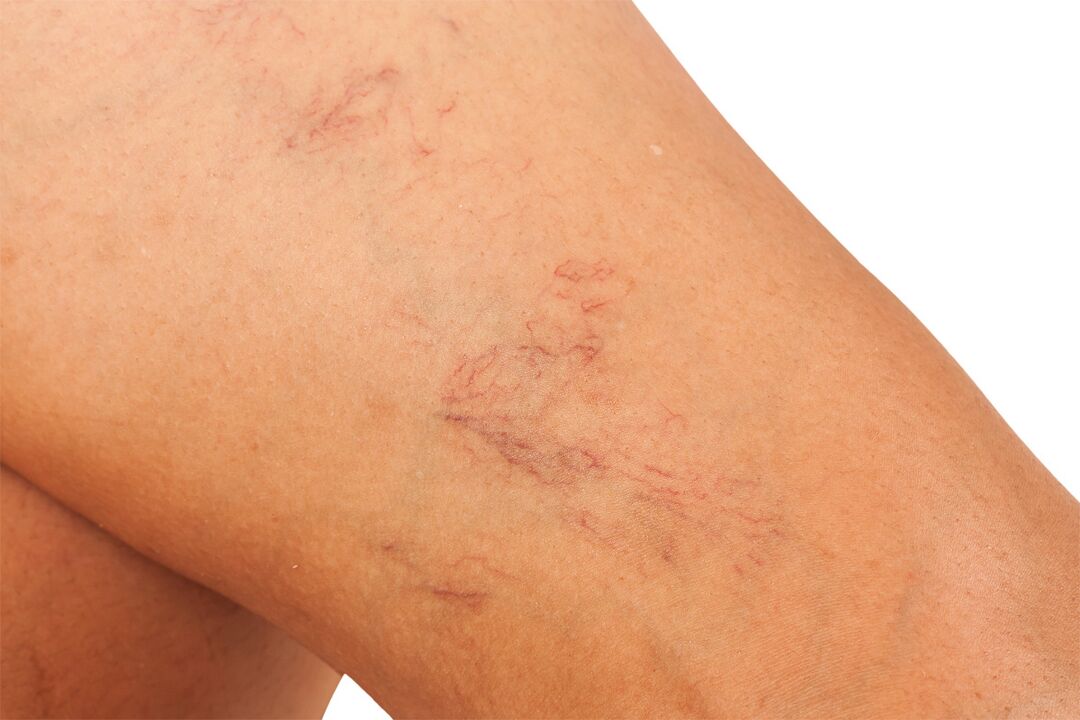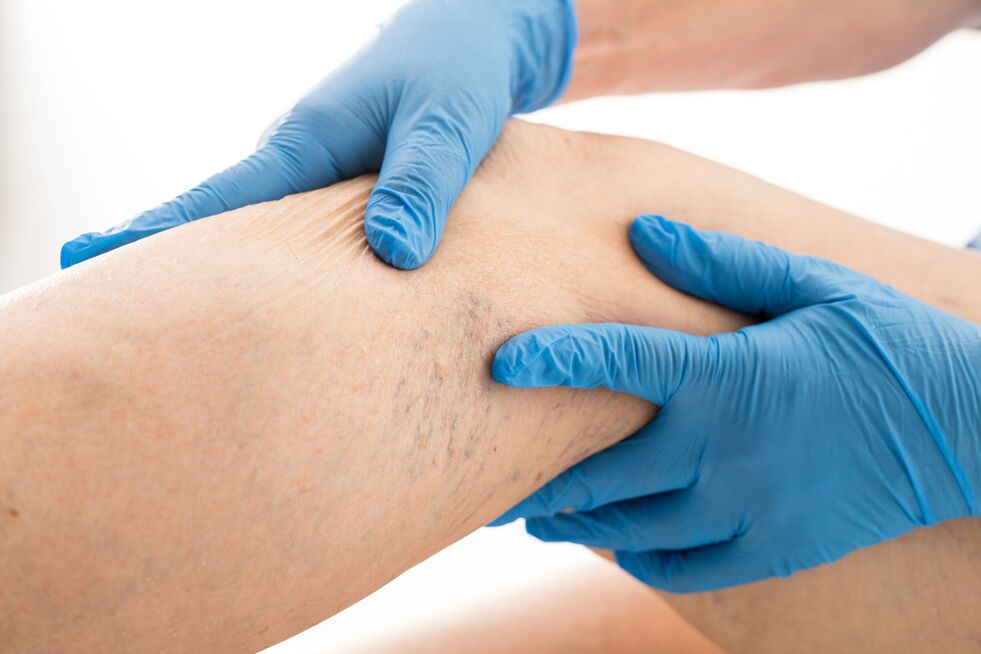Probably every third, or even every second person today suffers from varicose veins of the legs or prepared to it. This has become a real disaster, especially if we consider what loads our legs in today's civil world. You have to know which varicose veins are dangerous before the appearance of its first signs.
What is varicose veins

Varicosis on the legs is a chronic disease, in which the veins on the legs expand, creating knots, due to which the blood flow is disturbed and the blood remains in the venous system. In the disease, the light of the veins expands, due to the flow of blood from the legs in the veins, the veins on the legs have valves that only pass the blood, which does not allow the blood to stagnate in the legs. If the work of these valves is disturbed, then the blood begins to move in a different direction, respectively, stagnates in the legs.
The causes of varicose veins on the legs in women and men
Among the causes of the varicose veins on the legs are called, first of all, a hereditary predisposition to this disease. If in your family, someone has varicose veins on the legs, the risk of getting sick for you is extremely large, since the disease is due to the hereditary weakness of the venous-one wall of the most common causes.
Varicose veins on the legs are mainly a female disease, as wearing high wheels shoes significantly increase the risk. In addition, hormonal smoothies are added to the fire during pregnancy or menopause, which also causes the expansion of the veins in women.
Very often, legs of the legs are sick after forty -five years, but at a young age it is often found. Very often, in teenagers or young people, the disorder develops due to arterio-venosis messages of fistulas between veins and arteries.
The expansion of the veins on the legs is found in men, from the nature of the profession, giving the legs a great load. This disease is often sick with people who guide a sedentary lifestyle, they spend a lot of time standing, they move little. The nearby uncomfortable shoes, as well as extra kilos, contribute to the formation of stagnation. Hepatic diseases, such as cirrhosis or hepatitis, can cause varicose veins on the legs.
This disease is also quite common among athletes, and this suggests that excessive physical activity can also cause it.
Symptoms and signs
In the initial phase, the symptoms of the varicose veins on the legs are not evident, the disease can occur imperceptibly. Or the signs of the expansion of the veins are obvious: large tortuous veins on the legs begin to protrude under the skin, but a person does not sound any pain. Vienna can manifest itself, protrude through the skin gradually and can manifest itself after hard physical exercises or hard work. It happens that the veins appear suddenly after a person spent all day standing in the heat.
But if, when examining the lower part of the leg, you noticed that the veins under the skin became thick, that there were sites with knotted extensions and the veins themselves swell when you get up and fall when you go to bed, most likely the varicose veins begin.
Another symptom is the swelling of the legs during the day during the seat, standing, walking and the decrease in swelling in the liar position.
A brilliant feature of the disease is also the pigmentation of the internal surface of the legs: the skin is compacted, becomes less elastic, acquires a painful shine. In areas with such skin, hair falls.
Varicosis is also characterized by a constant feeling of fatigue in the legs, pain and burning. A person is quickly tired, sometimes convulsions are noticed.
Diagnostics and treatment: drugs, operations, popular remedies
Varicosis is diagnosed when examining a surgeon from a specialist, as well as on the basis of Uzu veins data. Flebography is also performed, or contrasting coloring substances are introduced into the blood and after which the veins are studied.
The treatment depends on the phase in which the disease is located and on the fact that the disease is accompanied by complications. The treatment can be based on conservative and surgical methods. Conservative means wearing socks or tights, the use of internal and external drug drugs. Conservative treatment methods also include sclerotherapy and laser irradiation. In particularly complex cases, the veins are removed surgically.

A person who suffers from varicose veins of the legs should know that in case of sudden increase in the leg in the leg, fever and compact of the skin, it is necessary to call a doctor urgently. Such an attack can be accompanied by lack of breath, a feeling of lack of air, weakness and bleeding.
Expert opinion: how is it related to varicose veins? An expanded vein occurs, the inflammation of the thrombus is thrombophlebitis. This disease can occur at high body temperature. Part of the thrombus can detach and enter the lung artery, which will cause the lack of breath and the further development of symptoms for serious threats to life.
Not in such cases with home treatment - calls a doctor.
The most effective and radical method for the treatment of varicose veins of the legs is, of course, the operations. The recurring operation to whether the conservative treatment methods are ineffective. The essence of the operation is reduced to the fact that through small engravings on the skin the surgeon removes the expanded veins. So the leg is carefully tied and after a few hours the patient can stand and even walk. This is perhaps the only guaranteed way to get rid of the serious consequences of the disease.
Popular remedies can help during treatment with traditional methods or relieve patient conditions. Therefore, the main components during the creation of medicinal ointments are:
- horse chestnut;
- Kalanchoe;
- sage;
- White willow cortex;
- Mokrin;
- Ceilandi;
- cabbage.
Popular products based on animal fats, apple vinegar, beekeeping products (honey, propolis), body, clay and other components will also help to treat the disorder.
The consequences of varicose veins
The varicose veins of the legs cannot be left alone, they must be treated, because, developed, this disease can lead to many unpleasant and sad consequences. Therefore, varicose veins can be complicated by eczema and dermatitis: inflammatory skin diseases on the legs, the cause of which is precisely the stagnation of venous blood. The eczema is characterized by the appearance of the outbreaks of redness on the skin and the edges of this redness are irregular, the skin in these places appears itchy and cracks or bubbles.
Varicoso eczema, in turn, can develop in an ulvete trophic. A trophic ulcer is also a complication of varicose veins: it is an ulcer that does not heal for a long time on the skin in the lower part of the leg. A trophic ulcer begins with a shallow ulcer characterized by a bleeding or transparent liquid on the bottom. This is an extremely painful wound that can fully ruin a person's life: leads to a violation of life, sleep.
One of the most common complications of the varicose veins on the legs are thrombophlebitis, or the inflammation of the vein, accompanied by the formation of a blood clot or blood clot. Thomboflebitis is usually accompanied by severe pain when walking, fever, redness of the skin and seal formation. With thrombophlebitis, vein breaks are possible in the place of expansion, following which bleeding is formed. In this case, it is necessary to call a doctor immediately.
























